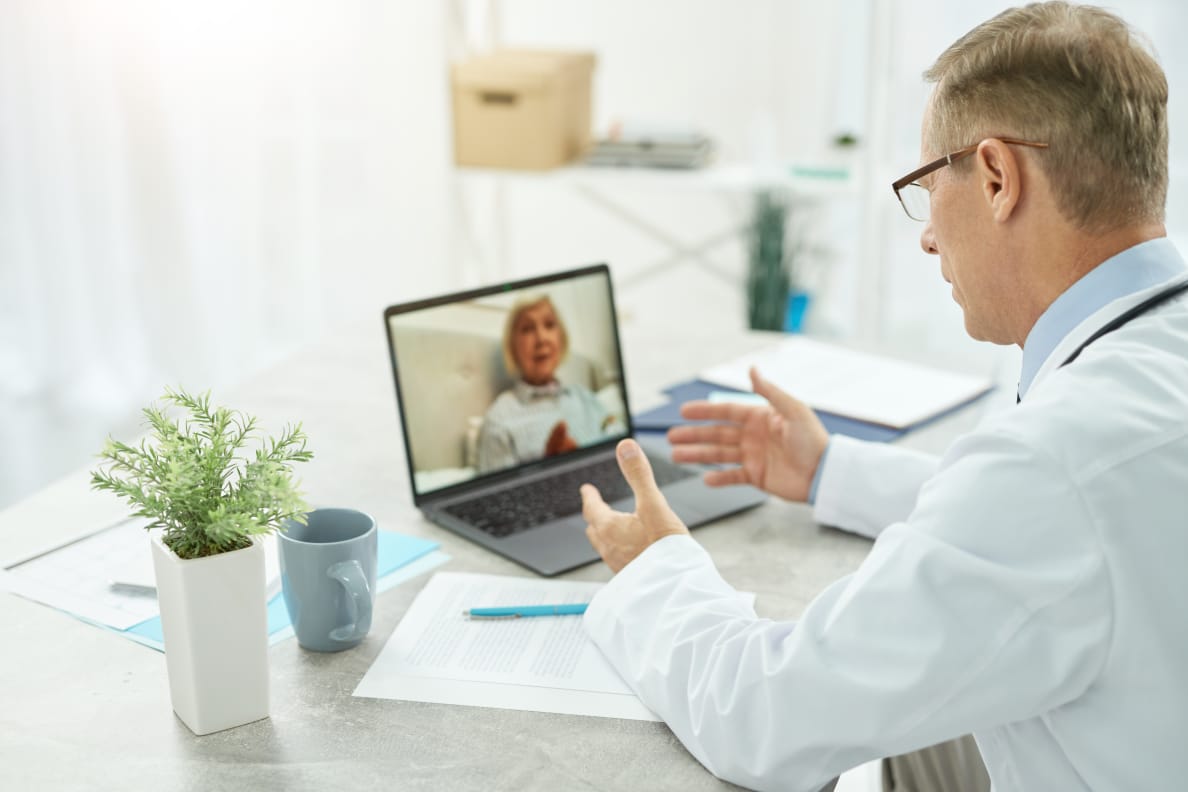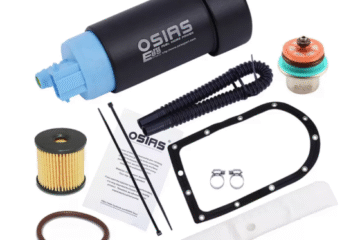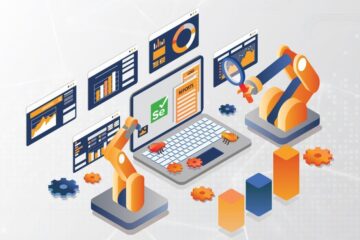Remote Patient Monitoring (RPM) is now one of the most revolutionary innovations in the healthcare sector. It enables the providers to monitor the vital signs, symptoms, and the general health of patients during out-of-clinic management with the help of interconnected devices and digital solutions. Doctors are no longer required to make physical visits since they can now monitor patients in real time, either after surgery, managing chronic diseases, or getting long-term treatment.
The very principle is very straightforward: gather precise health information remotely, transfer it safely, and enable medical workers to make appropriate decisions in a timely fashion. It is a model based on technology that leads to a higher engagement of patients and lower readmission rates in hospitals and the establishment of a more proactive healthcare ecosystem. As the healthcare system around the world transitions to preventive and personal care, RPM is becoming one of the pillars of the change.
How Remote Patient Monitoring Works?
Remote Patient Monitoring (RPM) consists of a system of medical-grade equipment, software, and communication technology. Connected patients use devices such as blood pressure monitors, glucose meters, pulse oximeters, weight scales, and wearable electronic cardioverter defibrillators. These devices are part of advanced Remote Patient Monitoring Solutions, designed to automatically send information via Bluetooth or cellular networks to a cloud-based platform that can be accessed by healthcare providers.
Clinicians are provided with dashboards that show real-time measures, trend analysis, and alerts in case a patient has an abnormal reading. Other systems are directly connected to the Electronic Health Records (EHRs), which ensure the smoothness of the documentation and clinical processes. Patients have it normally easy, as they can take their readings at home, and the data will automatically transfer to be reviewed
The system can also have patient-facing mobile applications that enable people to monitor their personal progress and receive medication or reading reminders, as well as direct care teams with the help of secure messaging or video calls. This continuous feedback process enhances responsibility and enables patients to have greater roles in their health care.
The Increasing Importance of RPM
The emergence of chronic illnesses, including diabetes, hypertension, heart disease, and COPD, has forced healthcare systems all over the globe to consider what lies outside the walls of the hospitals. The traditional management of these conditions is associated with high costs and a lot of inconvenience due to the frequent visits and constant monitoring that are traditionally required for managing these conditions. RPM is an efficient solution as it allows a constant follow-up without having patients physically present.
COVID-19 caused an apocalyptic uptake. Hospitals were overcrowded and face-to-face care was limited; therefore, RPM was required to ensure continuity of care. It will forever be part of the healthcare provision process after the pandemic, as medics and consumers have acknowledged its convenience, efficiency, and clinical value.
Benefits for Patients and Providers
Remote patient monitoring offers benefits on both sides. Remote Patient Monitoring Solutions provide a comfortable, accessible, and reassuring experience for patients. They can work from home, maintain their independence, and receive quality care. By tracking their own progress through these solutions, patients are more likely to adhere to treatment plans and make positive lifestyle changes.
To the healthcare providers, RPM provides an opportunity for early detection and quick intervention. Clinicians can detect problems when they occur instead of patients, who may report the symptoms later. It improves the outcomes and even saves lives in high-risk groups. It is also resource and time-efficient, giving the providers an opportunity to attend to actual patients who require face-to-face services at the same time, keeping a check on the others outside the hospital.
It is also financially beneficial to hospitals. They increase patient satisfaction and efficiency by lowering readmission rates, improving outcomes of chronic diseases, and increasing eligibility in reimbursement programs linked to RPM.
Technology Behind Remote Patient Monitoring
There is a wide range of technology that underpins RPM and is constantly being changed. It is based on interrelated medical apparatus approved for use in the clinic. These are gadgets measuring different biometrics and sending encrypted messages to safe platforms.
Cloud computing is core in managing the flow of data. It guarantees scalability, data storage, and processing capacity for large amounts of patient data. Machine learning and Artificial Intelligence (AI) are additional tools that can be applied to RPM to analyze the trends, forecast health risk, and automate alerts. As an example, code-breaking can be used to identify the first signs of heart failure or unusual breathing patterns in time before they become an emergency.
Another important element is integration with EHR systems. It guarantees that patient information in RPM devices does not exist in a vacuum, but rather automatically enters into the overall medical profile of a patient, enabling physicians to make decisions based on a holistic health profile.
Challenges and Barriers to Adoption
Nevertheless, RPM has quite a number of challenges that restrict its extensive application. The former is the complexity of integration. Most healthcare agencies have outdated or incompatible systems, and it is not engaging RPM platforms in clinical workflows.
Another challenge is reimbursement and regulation. Although reimbursement codes have been implemented in a number of regions, particularly the U.S., the lack of policy consistency in many areas continues to deter providers from using the technology on a large scale. Smaller practices might not be able to afford the expense of new hardware, software, and training of staff without some form of financial incentive.
It can also be the problem of patient compliance. Others, especially the older generation, might struggle with digital devices/applications. Without adequate education and encouragement, data collection may be uneven, and this may hamper the effectiveness of monitoring.
Another practical issue is the problem of data overload. Without an efficient triage or alert system, the clinicians may become overwhelmed at the sheer amount of incoming data. AI-based filtering is becoming a requirement to make sure that clinicians are only interested in changes in patient health that are significant.
Finally, there is the hold-up of privacy issues. The patients should be assured that their individual health information is safe and will not be abused. To make sure that the data is intact, healthcare givers have to use excellent encryption and follow specific laws such as HIPAA or GDPR.
Conclusion
Remote Patient Monitoring Solutions are transforming the way healthcare is delivered. They bridge the gap between hospital and home, turning each patient’s residence into a connected clinic. Although integration, reimbursement, and compliance remain challenges, the growing adoption of Remote Patient Monitoring (RPM) continues to gain unstoppable momentum.
RPM will cease to be a selective piece of technology and become a common feature of medical systems in all countries globally as the technology becomes more mature. It is the transition to preventive, data-driven care, to move away from reactive medicine, when patients are not only monitored when they feel ill, but continually, with issues being detected early and the overall outcomes becoming better.
Remote patient monitoring is not only the future, but also the present of a healthcare environment that requires efficiency, accessibility, and personalization, and it is here to stay



